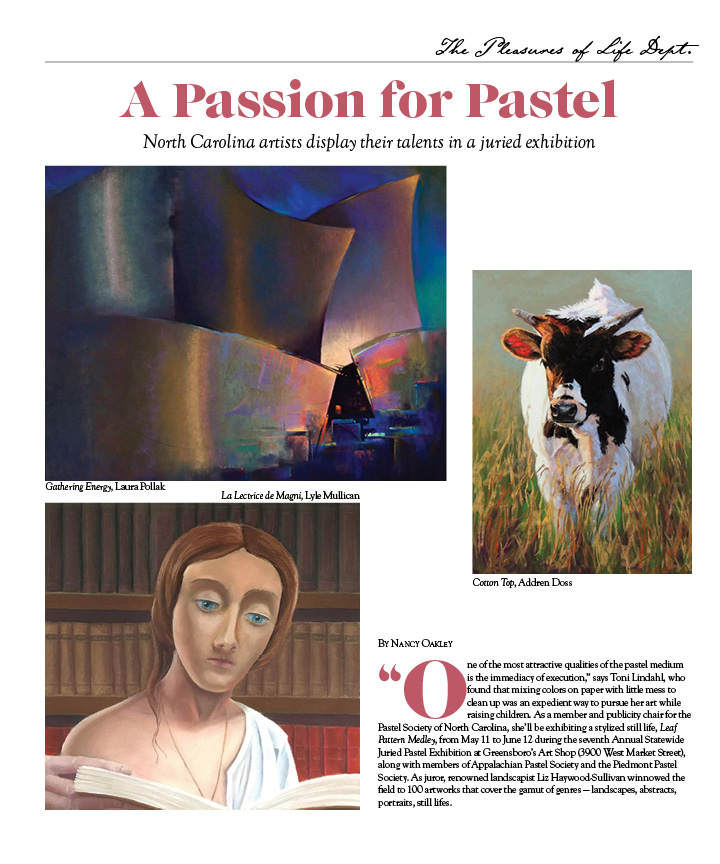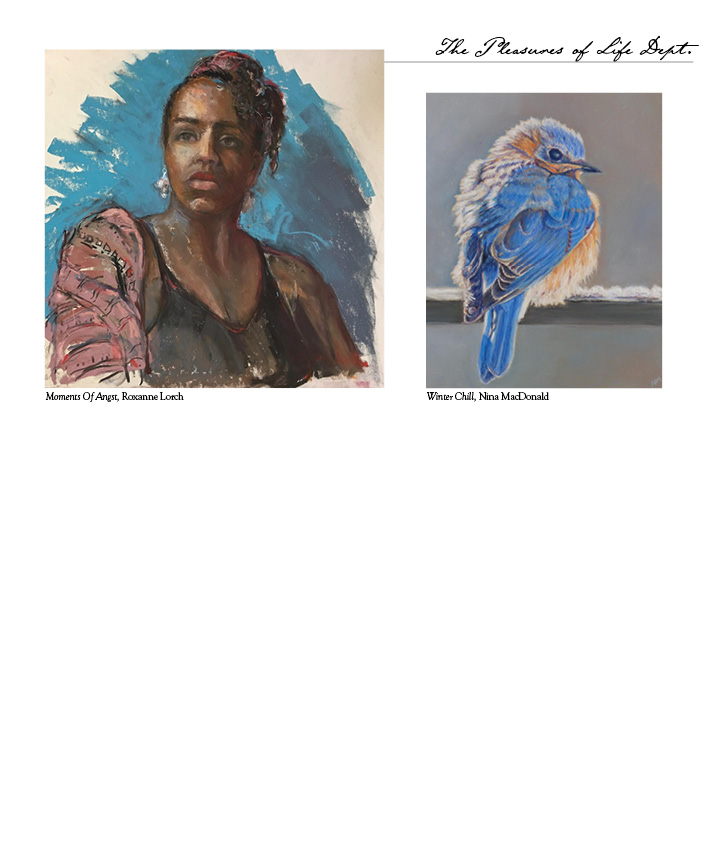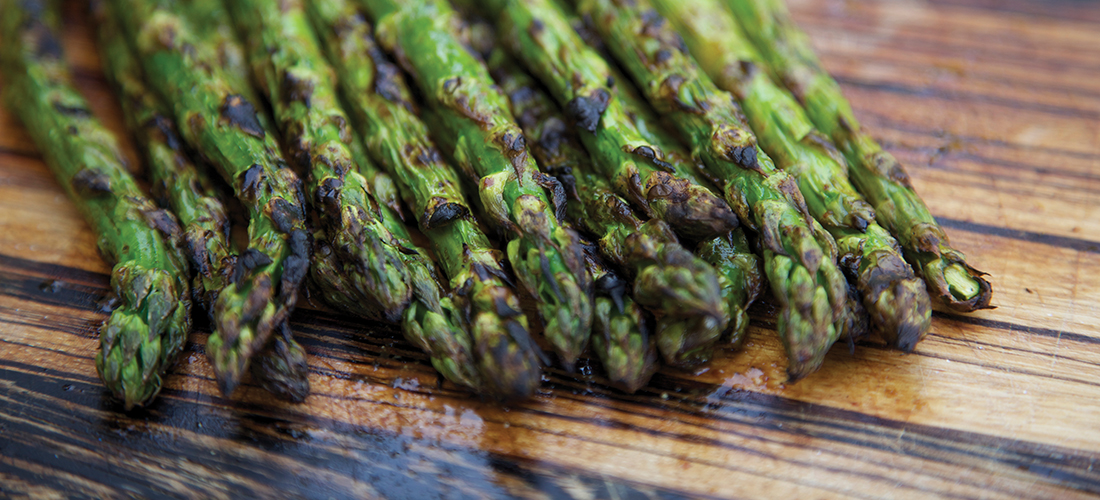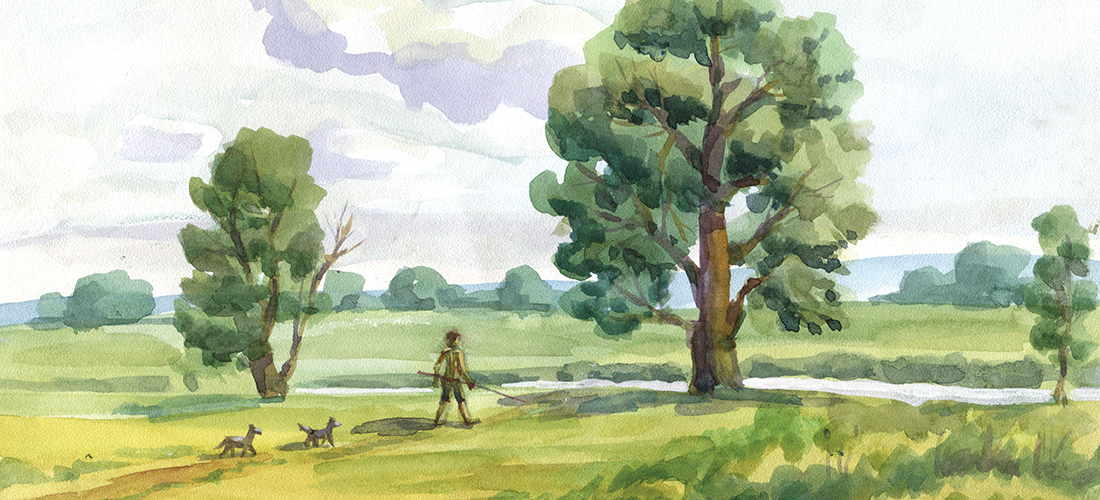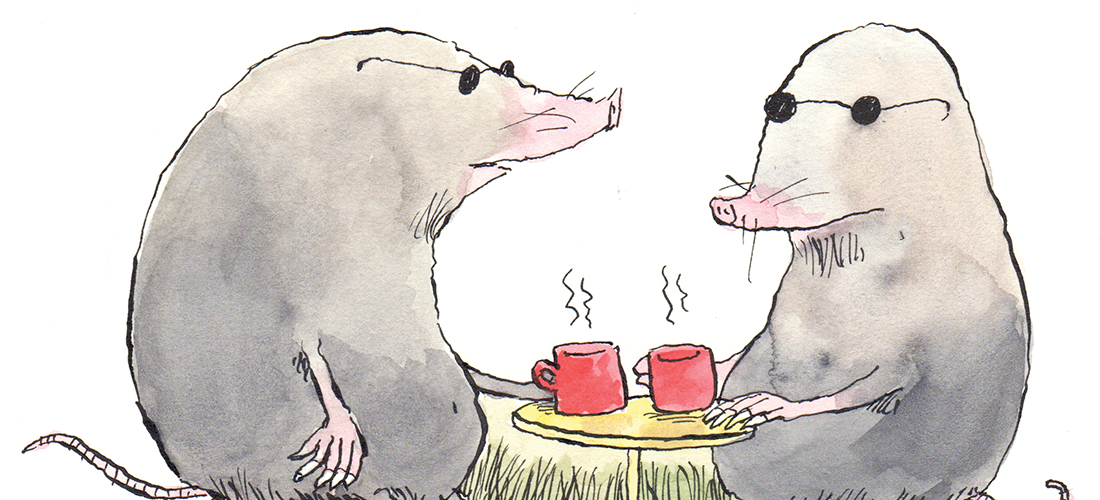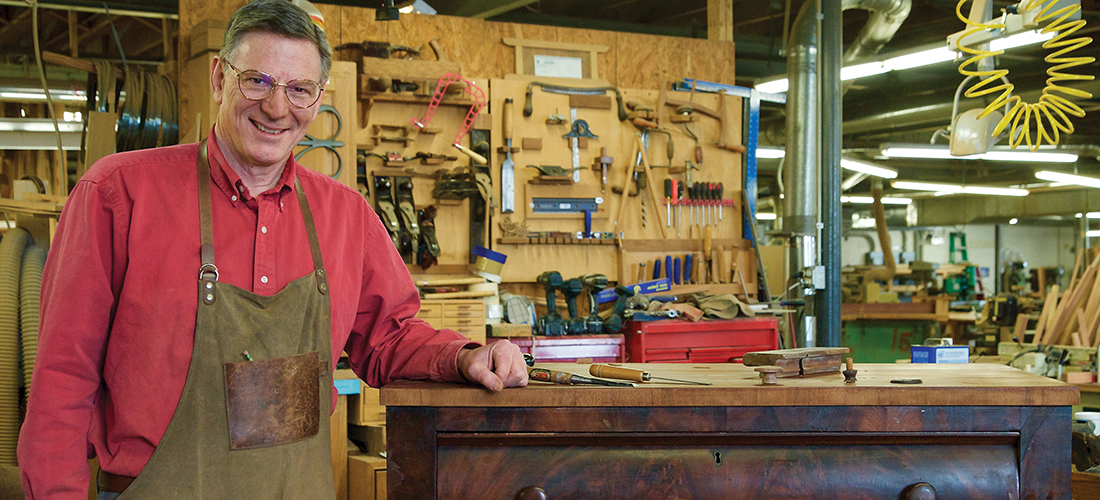The Accidental Astrologer
Bull Session
The life of a Taurus is always intense
By Astrid Stellanova
Queen Elizabeth and Ted Kaczynski. Willie Nelson and Billy Joel. Karl Marx and Malcom X. Tina Fey and Adele. Cher and Bono (U2 front man, not Cher’s late ex husband Sonny). That’s right, Star Children: These are Taurus babies who are all just a tee-ninesy bit intense and take to a stage, pulpit, or even the witness stand like a ducky takes to a daisy. The emerald? A pretty intense birthstone that makes it just right, don’tcha think? This is a month to end bad juju, make amends, dream bigger and dazzle with a smile. Ad Astra — Astrid
Taurus (April 20–May 20)
Sugar, you could be on your deathbed arguing about the guest list for your own funeral. Sometimes you are a pragmatic soul. At others, you go psycho over some little detail that flips you out and trips all the circuits. Take yourself for a little lunchtime walk or get your hands in the soil. Let nothing come between you and your joy this month.
Gemini (May 21–June 20)
If you don’t do anything else, accept a gift that is offered to you. Ain’t going to change the person who always gets you riled, so just live and learn, and move up the line. You’re a natural trendsetter, who will find yourself making an imprint. The second act of your life was always meant to be especially important.
Cancer (June 21–July 22)
Lordy! You started out saying you wanted to risk it for the biscuit, then you backed down. Don’t let anybody stop you this time — make your mind up to put some steel in your backbone, Honey. You have given much more than you’ll ever take — your moment has come and the reward is deserved. Also, say yes to that trip.
Leo (July 23-–August 22)
It won’t take a slide rule for you to calculate how many hours you have wasted on the wrong partner. It seems you overcommitted. Now, just try a little undercommitment. Sugar, I’m just warning you that you have been dropping the bucket down the wrong well. Your reward is waiting in an unexpected location.
Virgo (August 23-–September 22)
If you were just honest about it, being uppity is not working for you. By your standards, paper towels are white trash, too. Why don’t you practice a little more acceptance, because all this social maneuvering, posturing and aspiring just makes you look silly and feel lonely. And you don’t handle lonely.
Libra (September 23-–October 22)
A confession is overdue. There is something you need to stop carrying on your shoulder ’cause it’s not yours to bear, Love, and you don’t need to carry it one more step. Confront the person you think you wronged and make amends. They will surprise you, and your health will improve afterward.
Scorpio (October 23–November 21)
You are spending more time alone than is usual, and maybe you like your own company. Make it your business to reach out, Honey, and touch somebody, just like the commercial says. Few people know you have a doozy of a secret. Open up. They can handle it, Love.
Sagittarius (November 22–December 21)
The greatest adventure you ever took started at your front door. Only you understand what that means. Home is everything to you nowadays — far more than to most (and far more than to typically far-flung you!). It is also where you are finding your calm center in a very turbulent, topsy-turvy time. Rest up, Honey, because the adventure isn’t quite over.
Capricorn (December 22–January 19)
In your fantasies about the life you shoulda-coulda-woulda had and the path you didn’t take, there is always one particular dream on your mind. It has haunted you. This is a good time to take a step in realizing that dream, even if your rational self says it’s nuts. It ain’t. And, best of all, it ain’t too late, Sweet Pea.
Aquarius (January 20–February 18)
You are having a phase of intense dreams that reveal issues and concerns helpful in your daily life. In many ways, you have been dreaming of the most meaningful and best ways to move forward. Keep a close record of those reveries for May and notice key information that your mind is offering.
Pisces (February 19–March 20)
Shew, you crossed the wrong person and they have not let it go, have they? You sure did poke the bear and now you are living to regret it. Give ’em a good bottle of whatever they like to drink or take them some blossoms, but for garsh sakes, end this thing! They may be wrong but holding out ain’t worth it.
Aries (March 21–April 19)
Last month, you were given a birthday present that startled you and you haven’t quite figured out its meaning. That may be a good thing. Someone you don’t love in quite the same way as they feel toward you has been trying to worm their way into your heart. If you go there, it will flame out fast and cause more heartburn than passion, Baby. OH
For years, Astrid Stellanova owned and operated Curl Up and Dye Beauty Salon in the boondocks of North Carolina until arthritic fingers and her popular astrological readings provoked a new career path.
Light & Life

 Midway through her junior year at University of Maryland, where she was studying microbiology, Alexis Lavine decided to hang up her lab coat and pick up a paintbrush. Though she had long nurtured a dual interest in science and art — her father was a scientist and she had taken art classes from the time she was a child — she opted for the “lofty” ambition of becoming an artist. “Microbiology was practical,” Lavine says, “and I didn’t want to spend the rest of my life in a lab, surrounded by Petri dishes.” But a career in art? Most would deem it impractical . . . unless there were a way to combine the two. That’s exactly what Lavine did, by earning a Master’s in medical illustration from Johns Hopkins University.
Midway through her junior year at University of Maryland, where she was studying microbiology, Alexis Lavine decided to hang up her lab coat and pick up a paintbrush. Though she had long nurtured a dual interest in science and art — her father was a scientist and she had taken art classes from the time she was a child — she opted for the “lofty” ambition of becoming an artist. “Microbiology was practical,” Lavine says, “and I didn’t want to spend the rest of my life in a lab, surrounded by Petri dishes.” But a career in art? Most would deem it impractical . . . unless there were a way to combine the two. That’s exactly what Lavine did, by earning a Master’s in medical illustration from Johns Hopkins University.
In those days, the late 1970s, long before the digital revolution, medical illustration was done largely in pen and ink, and occasionally watercolor. “It’s clean and it dries fast,” Lavine explains. Her profession nurtured her talent in the “unforgiving” medium, and, she adds, “it taught me how to draw, and draw anatomical forms. (She typically begins a painting by sketching it out first.) Medical illustration also called for artists to work on-site — a disadvantage when Lavine’s husband, Phil, was transferred to the small town of Cumberland in the western part of Maryland. Nonetheless, it was a beautiful place, “like Boone without App State,” as Lavine describes the burg set in the Appalachian Mountains, conducive to raising children . . . and painting en plein air — a technique of painting outdoors that became popular in the 19th century and preceded Impressionism. For the next several years, Lavine applied her artistic talent and training to mountain landscapes, forests, rolling rivers, learning how to paint fast, so as to capture the sun’s light as it moves across the sky. “Plein air forces you to decide quickly and make decisions with confidence,” Lavine says. And indeed, you can see her strokes, both bold and splashy, and precise, capturing light shimmering on the surface of a lake, or filtering through the branches of trees.
After she and her husband moved to Greensboro in 2002, Lavine continued to paint outdoor subjects — waterfalls at the Bog Garden, a stone bridge in Fisher Park — until about 10 years ago, when she decided to shift her focus to studio work. One of her goals was to get into exhibitions. “I needed to be in the studio to take time to make it my absolute best,” she says of her art. She knew that studio time would force her to “slow my brush down and think a lot more about what I wanted to say in a painting.” A trip to India gave her an unexpected nudge, when she noticed the hand gestures among a group of women clad in colorful saris, their arms adorned with gold bangle bracelets. Rendering just their arms and hands in a painting she titled Sisters, Lavine says, “It was a turning point for me.”

A 180-degree turning point, as it turns out, for the artist started painting figures. Photographing people when she’s out and about — a long-haired bearded fellow at a jazz festival, a couple eating on a boardwalk, baseball fans enjoying a Grasshoppers game — depicting in precise detail the small moments of what it means to be alive: the joy of hearing music, of tucking into a good meal, the boredom of waiting, the tenderness of a touch, the wonderment in observing the natural world.
Lavine’s new artistic direction has helped her reach her goal of gaining much-deserved attention. She exhibits her work at The Art Shop, at Hampton House Gallery and Blissful Studios and Gallery in Winston Salem, and from May 3–29, a solo show of her paintings, All Watercolor II, will appear at The Artery Gallery on Spring Garden Street. Her summery nod to Grasshoppers season, Toppa the Eighth, will travel to Qingdao, China as a part of a joint exhibition between the Missouri Watercolor Society and the Qingdao Laoshan Museum. Meanwhile, as a member of myriad watercolor societies and associations, Lavine teaches classes, sometimes in far-away locales, such as Charleston, S.C., and two days a week at her home studio in northwest Greensboro. She is excited about a newly installed overhead camera that helps her students observe her more closely as she deftly dabs her brush into a pallet and creates a scene — be it a windowsill on a quiet morning or a wry still life of Chinese takeout. Otherwise, she’ll be out in public, observing the flow of humanity, awaiting the next muse to fire her imagination. “I started painting people from the inside out,” Lavine reflects. “Ten years ago, I started painting people from the outside in.”
Info: alexislavineartist.com; arterygallery.com. OH


Nancy Oakley is the senior editor of O.Henry.
Bookshelf
Food for Thought
Braking for Local Asparagus
Spring is the most ephemeral time of the year, so it pays to cook completely in the moment
By Jane Lear
Asparagus season is in full swing, and a good thing, too, for the vegetable is one of the home cook’s greatest allies. It can be steamed, boiled, sautéed, stir-fried, roasted or grilled. It comes elegantly thin or fat and juicy. It’s impressive drizzled with vinaigrette, and served as a first course; as a side to chicken, fish, ham, pork, or beef; or worked into pasta primavera, risotto, or an omelet or frittata. It is delicious hot, chilled or room temperature. It swings from simple, even austere, presentations (salt, pepper, olive oil, lemon zest) to more complex ones (in a stir-fry with other spring vegetables, for instance, or tucked into a creamy lasagne) without losing its presence.
And even though it is now found in the supermarket produce aisle pretty much year-round, most of us greet our local crop as something special, eating it with joyous, unabashed greed for the four to six weeks it is available. That is why it’s a good idea to buy plenty; I usually allot at least a half pound or more per person. On the off chance there are any leftovers, they’re delicious the next morning, warmed through and dipped into a runny soft-boiled egg.
Some people prefer pencil-thin spears, and others like them thick. The difference in circumference is due not to the relative maturity of the spears, but a combination of factors, including the age of the plants from which they were harvested (the thinner the spear, the younger the plant), cultivar and sex. Female plants produce fewer, larger spears; males give a much higher yield of thin to medium spears.
I tend to seek out asparagus that’s on the plump side because of its succulent, almost meaty, texture. I also find it easier to deal with. Skinny asparagus may look sophisticated on the plate, but during cooking, it can turn from tender to mushy in about a millisecond, and attention must be paid.
All that aside, go for whatever asparagus, whether thick or thin, is the freshest, because it doesn’t keep well. Look for firm, tightly closed tips with a beguiling lavender blush, scales (or leaves, botanically speaking) that lie flat against glossy stalks, and woody ends that are freshly cut and moist. The asparagus in our markets is typically green, but purple cultivars are becoming increasingly available; those are especially nice raw in salads, because when cooked they lose their color, which can range from pale mauve to deep purple. The white asparagus that is more common in Europe is simply prevented from turning green: The growing spears are continually banked with soil to keep them in the dark; that way, they don’t produce chlorophyll.
Cooking asparagus is staggeringly simple, and my basic method is as follows. First, rinse the asparagus well to remove any sand or grit (trust me, it’s there) and pat dry. Snap off the tough ends (or cut them if the spears are very thick), and peel the stalks if the skin is fibrous.
In a large skillet, lay the asparagus lengthwise, tips facing in the same direction, in an inch or so of salted water. Bring the water to a gentle boil and cook the asparagus until it is barely tender; the tip of a knife inserted in a spear should meet a very slight resistance, and if you pick it up in the middle with tongs, it should bend slightly. Thin spears take just a few minutes and more robust spears a bit longer. Once you’ve prepared asparagus this way, you can go in any number of directions. Below are two favorites.
A Homey Asparagus Supper for Two
I cobbled together this dish one rainy spring evening a few years ago, and was really proud of myself — until I realized the revered English food writer Nigel Slater had beat me to the punch. “A rubble of cooked, chopped pancetta, and especially its melted fat, makes a gorgeous seasoning for a fat bunch of spears,” he wrote in Tender: A cook and his vegetable patch. And how.
Preheat the oven to 400°F. Using the basic method outlined above, cook a bundle of medium to large asparagus until just barely tender. Meanwhile, melt a generous tablespoon of unsalted butter in an ovenproof skillet or sauté pan over moderately high heat. Add an enjoyable amount of chopped pancetta or bacon and cook until golden. Remove from the heat.
Scrape the pancetta and the fat in the pan to one side and add the asparagus. Spoon the pancetta and fat over the asparagus, then sprinkle with freshly grated Parmigiano-Reggiano. Put the pan in the oven and bake until the cheese is melted, 5 minutes or so.
Asparagus Mimosa for Four
This recipe, which can easily be doubled, is a wonderful way to kick-start a dinner party. The asparagus is delicious warm or at room temperature, and the sieved hard-boiled egg is more than a pretty topping: As it absorbs the vinaigrette, it fluffs up like the yellow mimosa blossoms that punctuate winter in Provence. The richness of the egg yolk also gentles the vinaigrette and gives it body.
Cook about 1 1/2 pounds asparagus as above. Cut 2 hard-boiled eggs in half, then press them through a sieve into a small bowl. Whisk together about 2 tablespoons white wine vinegar, 1 tablespoon minced shallot, and a dab of smooth Dijon mustard. (A little minced fresh tarragon would be nice, too.) Add coarse salt and freshly ground black pepper to taste. Whisk in 1/3 cup extra-virgin olive oil (use a mild oil, not a peppery Tuscan one). Toss the asparagus in a small amount of the vinaigrette, and reserve the rest. Parcel out the asparagus among four plates, spoon the rest of the vinaigrette over it, and sprinkle with the sieved egg. Et voilà!
Asparagus on the Grill
By the time May rolls around, we all want to spend as much time as possible outdoors, not standing over a stove. Luckily for us, the technique of grilling really concentrates the singular sweetness of asparagus and overlays its vegetal purity with a little smokiness. Grilled asparagus is delicious as is or with a garlicky mayonnaise.
“When you put just-picked asparagus on a hot grill, they are so juicy they actually jump as they start to cook,” Andrea Reusing once told me. The acclaimed chef-owner of Lantern, in Chapel Hill, and the restaurant at The Durham hotel, in downtown Durham, is extremely deft with seasonal ingredients, and the below recipe is from her book, Cooking in the Moment.
Andrea Reusing’s Charcoal-Grilled Asparagus
Prepare a hot fire in a charcoal grill. Count on
8 to 10 asparagus per person as a side dish or as
the focal point of a salad. Keeping all the tips pointing the same direction, toss the asparagus with olive oil, a generous amount of salt, and some freshly ground black pepper. When the flame has died down, the coals are completely covered with ash, and the grill is very hot, grill the asparagus
(in batches if necessary). Cook 2 to 3 minutes per side until fragrant, lightly marked, and vibrant green on the outside, and juicy and tender on the inside. OH
Jane Lear was the senior articles editor at Gourmet and features director at Martha Stewart Living.
Simple Life
The Dash of Life
Savoring time between the beginning and the inevitable
By Jim Dodson
At the beginning of Episode Two of my favorite British TV program of the moment, Delicious, the central characters peaks from his grave in a Cornwall churchyard, recalling a famous poet’s observation about the symbolism of markings in stone.
“On a gravestone you see two dates — a beginning and an end, with a tiny dash in between. That dash represents everything you’ve ever done. Everywhere you’ve ever been. Every breath kiss or meal. It all boils down to just one little dash. . .”
As a chronic wanderer of old burying grounds and admirer of witty epitaphs, I learned years ago that burying stones “speak,” telling tales and offering nuggets of wisdom to those willing to listen.
Most of us, however, are living in a time when daily life seems like a frantic dash from one place to the next. With work ruled by the tyranny of deadlines and calendar books, and private time invaded by social media and the clamors of an info-addicted world, it is often not until one reaches a certain age or experiences some kind of unexpected drama that the need to pause and reflect upon one’s own mortality — the meaning of the dash — becomes clear.
One year ago this month, I had my dodgy gall bladder removed. Frankly, I wasn’t sorry to see it go. The blessed little thing had been bugging me for years. At the same time, I owe that mysterious little organ a genuine debt of gratitude because in the course of a common preparatory scan, a small growth near my lower intestines was detected. It was nipped out by artful surgical procedure, revealing itself upon analysis to be a slow-growing tumor. Fortunately, the prognosis is excellent. There is only a four-percent probability of recurrence, which means no follow-up therapy is required for the time being.
Life is full of verdicts, large and small. Needless to say, I was relieved by this one and, to be blunt, awakened by it. But for a chance discovery, things could easily have gone a very different direction, as I’d enjoyed the kind of good health one might easily take for granted. In short, I was lucky to have had that aching gall bladder.
But mortality is full of wake-up calls and epiphanies. Wise souls take notice of the changing landscape around them, and sometimes within.
On one hand, I was powerfully reminded of the brevity of my time on this Earth, and on the other, comforted by the fact that I had excellent role models for aging smartly and — begging to differ with poet Dylan Thomas — going gently into that good night. Both my parents had their own run-ins with the dreaded C-word at about my age but never complained and went on to live astonishingly full and happy lives for the next two decades.
Their dashes, in other words, were both robust and well-lived till the end, full of gardens and grandkids, travel and exploration, making new memories and doing good work, making friends and keeping faith in the sustaining power of human and divine love. My old man worked until he was 80 and moderated the men’s Sunday School class at our church for almost a quarter of a century. My Southern mama cooked every week for the church feeding program and worked with homeless families. During the last two decades of their lives, they went to movies and took walks like old lovers, and snuck off to the hills for private weekends away. I took to kidding them that they were behaving like irresponsible teenagers.
More important, when their “Time” finally arrived, their “dash” expired its length — I was fortunate to sit with both at their bedsides as they slipped the bonds of this Earth. Nothing was left unspoken, and they displayed no fear whatsoever about the end of their days or the adventure that lay ahead. Sages of every faith tradition hold that human beings tend to pass away as they have lived their lives.
My father’s final words on a sleety March evening were, “Don’t worry. It will be fine in the morning. Go kiss your babies.” Sure enough, the sun came out at dawn, birthing a beautiful spring day. And I did as instructed.
On a summer afternoon four years later, while sharing a glass of wine on the terrace of her favorite seaside restaurant in Maine, I remarked to my mom that she must really miss my father. She simply smiled. “Of course I do, Honey. But don’t worry. I’ll see him very soon.”
A week or so later, she suffered a stroke and was talking about her grandchildren as her nurse in the ICU changed her sheets moments after I left her. “Your mom’s heart monitor suddenly went flat and I looked over at her,” she told me later. “Her eyes were closed and she was smiling. I’ve never seen a more peaceful passing.”
Every now and then I stop by the simply dated gravestones of my folks in a beautiful cemetery not far from our house, just to say hello — and thanks for the guidance.
That said, a surprising number of friends my age — I recently turned 65, though I don’t feel anywhere close to that — confess amazement over how rapidly their lives are passing, how quickly their days seem to have vanished down the rabbit hole of time. Perhaps they hear the clock of the world in their inner ear. “Is it already Monday again?” quips our dear old pal Susan with a husky laugh. She walks with my wife and me every morning at five, as nature and the neighborhood are both just stirring.
Susan’s question is more of an amused observation about the speed of life than a complaint about its brevity. She teaches special-needs minority kids in one of the most disadvantaged neighborhoods of the city. And though she herself cracked 65 a few month ahead of me, her bounteous enthusiasm, creativity and passion for doing good work and making a difference in a small person’s life are flat-out palpable. She radiates joy and an infectious curiosity about what lies ahead — proof of Poor Richard’s admonition that a long life may not be good enough, but a good life is long enough.
As for my part, the older I get, the slower I plan to walk. Part of the reason is creaky knees. As the tortoise proved, slow and steady wins the race — if this life is a race at all.
The other reason for slowing down my dashing life is to see more of the passing landscape. Not long ago, my wife and I began “training” for a walk across Italy from Lucca to Rome this coming September with 50 or so other pilgrims from our church.
During the weekly “practice” hikes around the city at dusk, which are really just a lovely excuse to socialize and drink good wine afterwards, I am invariably somewhere at the rear of the pack, ambling along at my own pace, the aforementioned knees gently complaining with every step, but happy to follow where the others lead. This is a trick I learned early in life, for I’ve long been something of a solitary traveler, taking my own sweet time to get wherever I’m going.
As the second son of an itinerate newspaperman who hauled his family all over the deep South during some of the region’s most turbulent years, I experienced a decidedly solitary boyhood, exploring the woods and fields largely on my own or reading books on a rainy porch. Occasionally I’d check out historic graveyards, battlegrounds and Indian burial mounds with my older brother and father. Dick and I both became Eagle Scouts but were never too keen on the group dynamic. We preferred going our own ways at our own rhythm.
As we passed through one of the city’s older neighborhoods on our practice hike the other evening, my bride — chatting pleasantly with other pilgrims as she motored by her slow-footed husband — glanced around and remarked, “You know, I’ve never seen the city from this angle before. It’s quite beautiful, isn’t it?”
Indeed it was, and is.
As the sun set, her comment made me think about how slowly I plan
to walk across Tuscany this summer, taking in all I can before my “dash” runs out.
Emily Webb Gibb’s ’s haunting farewell speech from Thornton Wilder’s poignant play Our Town was also suddenly in my head.
Gibbs is the young heroine who passes away in childbirth and looks tearfully back on a wonderful life and family she fears she may have taken for granted, as the stage manager leads her to join the other spirits in the village cemetery.
“. . . They’re so young and beautiful. Why did they ever have to get old? . . . I love you all, everything. I can’t look at everything hard enough. It goes so fast. . . . We don’t have time to look at one another. I didn’t realize. All that was going on in life and we never noticed. Take me back — up the hill — to my grave. But first: Wait! One more look. Good-bye, Good-bye, world. . . Good-bye, Mama and Papa. Good-bye to clocks ticking and Mama’s sunflowers. And food and coffee. And new-ironed dresses and hot baths and sleeping and waking up. Oh, Earth, you’re too wonderful for anybody to realize you. Do any human beings ever realize life while they live it?”
May is a lovely time to wander a churchyard, I find. The Earth is in bloom and old stones speak of the need not to dash too quickly through
the journey. OH
Contact Editor Jim Dodson at jim@thepilot.com.
Papadaddy’s Mindfield
Mole Talk
Small ears that hear everything
By Clyde Edgerton
Moby and Medley are moles, sitting at a table in the Sandbucks Coffee Shop, where they meet once a week to talk about life underneath and around the Yardley home. They hear a lot of what goes on up above among the humans and human media. They don’t see, of course, and their lives are relatively dull, same-o same-o. Dirt, roots, dampness, clay, dryness and darkness.
MOBY: What’s the latest?
MEDLEY: I’m writing an important report on Republicans and Democrats.
MOBY: How do you know about all that?
MEDLEY: I can hear. You know, don’t you, that Mr. and Ms. Yardley, up above, are split?
MOBY: They’re getting a divorce?
MEDLY: No, no. I mean one’s a Democrat and one’s a Republican.
MOBY: Seems I remember something about that.
MEDLEY: My report is getting reviewed in The New York Times and at Fox News.
MOBY: Those organizations don’t like each other, right?
MEDLEY: Right. They see news differently.
MOBY: But isn’t all news the same?
MEDLEY: Oh, goodness gracious, no. There’s red news and there’s blue news.
MOBY: I thought there was only true news.
MEDLEY: Not anymore. Everything is either-or. Left or right. Up or down. Black or white.
MOBY: I’m just glad I can’t see. What color are we?
MEDLEY: I’ve heard that we are some shade of gray more or less. And did you know, the blues think all the reds are idiots.
MOBY: Really? What do the reds think of the blues?
MEDLEY: That they are all idiots.
MOBY: It’s a shame, isn’t it? Do they ever talk to each other?
MEDLEY: Not much. They holler. And they acted that way right before the Civil War, too.
MOBY: Oh, mercy. Do you think there will be another Civil War up there?
MEDLEY: No way.
MOBY: I wonder how the Yardleys live together — you know, one red and one blue.
MEDLEY: I think they talk only about sports, music, the weather and Naked and Afraid. They avoid politics.
MOBY: What’s politics?
MEDLEY: “Naked and afraid.”
MOBY: Oh. What about that Second Amendment thing?
MEDLEY: Have you read it?
MOBY: I just keep hearing about it.
MEDLEY: If you live in one of the 50 states it keeps you safe.
MOBY: Really? That’s what it says.
MEDLEY: That’s right. It says, “A well-regulated Militia, being necessary to the security of a free State, the right of the people to keep and bear Arms, shall not be infringed.”
MOBY: That’s all it says?
MEDLEY: That’s the whole amendment, every word.
MOBY: That’s a load off my mind. Who could be against that?
MEDLEY: Nobody, of course. It’s common sense. The blue and reds agree on that one. Without that amendment we just couldn’t feel secure.
MOBY: Is there an amendment that lets us buy cars?
MEDLEY: Oh, yes. That’s the Third Amendment. And the Fourth Amendment lets us buy refrigerators. You can’t own something unless there is an amendment for it.
MOBY: How did you learn all that?
MEDLEY: Google. You can hear Google now, so people don’t have to read.
MOBY: So, what’s the title of your report?
MEDLEY: It’s called “Equality, Fair Play, Guns, Cars, and Refrigerators: Security in America.” I also wrote some stuff about globalization. See, the more guns that get into the little states around the world, the more secure they will be — just like in the U.S.
MOBY: That’s a load off my mind.
MEDLEY: Mine too. How about another cup of coffee?
MOBY: You bet. That’s good coffee.
MEDLEY: Seventh Amendment: “Good coffee is necessary to life, liberty, and the pursuit of happiness.” OH
Clyde Edgerton is the author of 10 novels, a memoir and most recently,
Papadaddy’s Book for New Fathers. He is the Thomas S. Kenan III Distinguished Professor of Creative Writing at UNCW.
The Artist’s View
Hallowed Ground
These days, the working life of Bill Mangum has quite literally become a walk in the park. Renowned for his realistic canvases, the Gate City painter — aka “North Carolina’s Artist” — turned to Abstract art last year and has created the annual Honor Card for Greensboro Urban Ministry for years. Now, Mangum is lending his talents to another worthy cause: Greensboro Beautiful’s 50th Anniversary. The nonprofit secured four different underwriters for four signature paintings. Mangum explains that 500 reproductions of each will be made in an 11-by-14-inch format and sold for $25 to raise funds for the Greensboro Beautiful.
The Bryan Foundation supported the first painting of Gateway Gardens, unveiled last month at Groovin’ in the Garden. An idealized rendering of the green space, it depicts several elements that are impossible to see at once: the alphabet block archway, the fountain and frog sculpture, the whimsical giraffe topiary. “I took a lot of artistic license in pushing perspectives and slightly rearranging things,” Mangum admits. “But it all works. It makes for a more entertaining piece.” The second painting of the Tanger Family Bicentennial Garden will make its debut at the Parisian Promenade Sunday, June 3, and the third, of Greensboro Arboretum, will be introduced at Art in the Arboretum on Sunday, October 7. The last in the series, a painting of the Bog Garden at Benjamin Park, will be ready later this year. Mangum will attend each event to sign the prints and discuss his works.
He visits each of the gardens frequently so as to capture nature’s changing moods. “If you don’t catch a particular color or blossom, it’s gone till next year,” he says. Along the way, the project started to expand as Mangum painted details — a chickadee perched on a snowy branch, an empty bench scattered with leaves, a butterfly hovering over a blossom. His intention? To create 50 additional paintings that will comprise an exhibition at year’s end alongside the four signature paintings.
There’s a larger purpose to these intimate works. “We tend to see things in 180 [degrees], but I’m hoping we can see the little things,” says Mangum. To his eye, they tell a human story among the nooks and crannies of each garden, serving as informal memorials to those who have gone before us and bring joy to current residents. He himself will establish a memorial to his late son who enjoyed playing music among the blooms and shrubs at Tanger. “If you look, there are remembrances everywhere,” he says. “In many respects, this is hallowed ground.” Info: greensborbeautiful.org.
— Nancy Oakley
Putt ’er There, Ma!
A Mother’s Day putting green for Donna Joyce
By Cynthia Adams • Photographs by Amy Freeman

Some moms get a card and flowers — maybe a box of chocolates or brunch — on Mother’s Day. Unless you’re Donna Joyce, who got her own putting green and golf hazard from her three sons a few years ago.
“The boys used to make ceramic things, or give me cologne, or a gift certificate,” she says, perched in her kitchen, (chronicled among this magazine’s pages two months ago), having a cup of orange tea.
That all changed in May of 2015. “Will this be topped?” Donna asks, gesturing to the backyard and shaking her head. “No, that was the pinnacle. This was way over-the-top for Mother’s Day.”
At the back of Don and Donna Joyce’s Irving Park yard the gift is one Donna can admire from the kitchen, dining area and the den — created by her husband, Don Joyce, and sons, Donny, Dillon and Ben.
Over two weekends in May her guys labored to create something unique in a yard that had morphed over time as the boys grew into manhood. The newest iteration of the family’s backyard neatly coincided with Donna having taken up golf. The Joyces’ family excursions often included golfing destinations like Carlsbad, California, where the sons met golfer Sergio Garcia.
The addition allows the golf neophyte to work on her game.
“My putting?” Donna laughs, wide-eyed, “I’m getting there. Rather than having to be the best at this, I can be a part of this.” Then she grins. “You know they say you drive for show and you putt for dough.”
Over the years, the area has hosted, among other things, a sandbox, a zipline and a treehouse, which were there in 1993 when the family first moved to the neighborhood. They removed the treehouse as the boys outgrew it. Then the sandbox was banished. In their place followed a lacrosse playing field with gravel and nets in 2000.
The two older boys left for college; the youngest one was soon to leave. Then both Donny and Dillon migrated back home briefly when they entered graduate school.

Other than an occasional place to play fetch with the family Lab, the lacrosse field, meanwhile, languished.
“Then Don mentioned that we should do something with the backyard,” says Donna.
She recalls seeing a picture of a perfectly manicured green mound, complete with hole and pin. “I asked my husband; ‘do you think we could feasibly put a putting green back there?’”
And the idea was set into motion. “They brought in some sand, built it up, put in some artificial turf from a home box store, and also had the idea for the chipping area,” Donna says. They rented a compactor to pack the sand and added decorative stone. “This took a couple of weekends.”
She explains it didn’t hurt that her husband is the owner of Pomona Pipe, Inc., and in the business of designing and building roads and bridges. Plus, he had three sons to provide free labor.
“My husband is a civil engineer, so he knows how to do layout and design and execute the work. He’s also a lifelong golfer, so he knew what he wanted to create, along with the picture I’d already pulled,” Donna says. “He pretty much supervised and told my sons what to do and how to implement his plan.”
The family plunged right in with gusto. “The boys supported it. There’s always a project in the making. We don’t shy away from projects.” She laughs. “What is my role? Well, I’m the visionary with the Honey-Do list.”
Now do they have a mini Augusta National in the making perhaps?
“Well, I wouldn’t go quite that far, but it’s kind of a neat story,” Donna says. However, the Joyces do hold their own Master’s party when the boys come home to visit.

The putting green and chipping area, landscaped with rhododendron, various grasses and accents of stacked stone, is where the Joyce men — and Donna — now gather to hone their game and cook out. “We had a small barbecue and clinked drinks to dedicate it,” she recalls.
The newest golfer in the pack says nostalgically, “The backyard is where we’ve had many fond memories, even though it’s not in some exotic place. When I play with my sons, I relax and enjoy it.”
And it keeps evolving. To prevent the yard from looking overly links-y, the couple have a few more plans in store as do-it-yourself family projects. Next, the hot tub currently situated on the side of the yard will be deep-sixed to make way for a fountain, says Donna. “Then we will put in some boxwoods and herbs.”
Meantime, she works at her game intermittently, sometimes with a girlfriend. “We’re just trying to get to bogey golf,” Donna jokes, her self-deprecating comment a testament to the difficulty, if not impossibility, of mastering the royal and ancient game.
“It’s not intuitive,” Donna affirms. So, she practices in the backyard with her guys, hoping to putt for dough. But that, too, has its challenges. Giving an appreciative look at their well-loved backyard as the family Lab traipses towards the green, she jokingly cautions: “Look out for hazards!” OH
Cindy Adams gave her sister her golf clubs, shoes, glove and balls after a few miserable attempts at the game.
Gate City Journal
Saving the Day
Local craftsman Erich Thompson refreshes the work of
legendary cabinetmaker Thomas Day
By Ross Howell Jr.
Iím standing in the Patterson Street home of the Woodworker Group LLC, looking at a dark chest raised a few inches above the workshop floor.
To my untrained eye it’s unremarkable, really.
The rosewood veneer is dull with age. Some of the mahogany-finished walnut edges and carved details are badly chipped. There’s a gap in the top of the chest, and at least a dozen C-clamps are arranged around the edges to hold the veneer in place while glue sets.
Standing next to me is Erich Thompson, who sees my puzzlement and nods. He props his wire-rim glasses on his brow and rubs his eyes. The glasses drop back to his nose.
“Definitely the worse for wear,” he says. “Next step will be to replace the edging.”
Thompson is a fit, straight-shouldered man I met more than 10 years ago. My wife, Mary Leigh, had taken one of his woodworking courses years before and he’d come by to help us with some of the details on the Fisher Park bungalow we were renovating.
“I’m using hide glue,” Thompson says, made from, as the name implies, animal hides.“The same kind of glue Thomas Day would’ve used.”
On his business card Thompson describes himself as a “Woodworker.” The sign painted with his name outside his shop advertises “Handcrafted Furniture.”
Both accurate descriptions. But quietly modest, as is the man.
In fact, Thompson is to furniture what Horace is to the ode or Shakespeare to the sonnet.
A master. And there’s more to the story.
Formally he’s the Reverend Doctor Erich Thompson, a 1987 graduate of Union Presbyterian Seminary, Richmond, Virginia. He’s served congregations in Virginia and North Carolina, taking up woodworking as a hobby.
“The hobby got out of hand,” Thompson says with a wry smile.
A turning point came in 2004 when he attended a dedication ceremony for the sacred furniture — a baptismal bowl stand, an altar, a pulpit and a processional cross — he’d designed, made and donated to the Presbyterian Conference Center in Montreat.
“There must’ve been about 1,500 people in the crowd,” Thompson says. “I was very nervous, because my designs are sparse, you know? They’re not for everyone.”
When the hall echoed with the sound of applause, Thompson realized others shared his vision.
“A couple weeks later,” he says, “I got a call from Myers Park Presbyterian Church in Charlotte. They said they wanted a suite of pieces just like the ones in Montreat.”
In time, more churches began to contact him, asking him to create and produce designs for their sacred spaces.
His work has been commissioned for churches in Salisbury, North Wilkesboro, Clemmons, Asheville and Beth David Synagogue in Greensboro.
“A dream project was at Forest Lake Presbyterian in Columbia, South Carolina,” Thompson says. “They’re a high-risk, low-reward ministry. They’re not looking for security, but for challenge.
“The vaulted ceiling of the church is like an inverted boat,” he continues. “So I designed an altar that was the mirror of that image — the upright bow of the boat.”
These days Thompson is a busy man indeed. He has produced pieces for nearly 50 churches in 16 states. Right now he’s pondering projects in Virginia, D.C., Texas and Pennsylvania.
“I’m scheduled more than a year out,” he says. “But who wouldn’t make time for a Thomas Day piece?”
Thomas Day is a legendary figure for antiquers and students of American furniture. Born a free man of color in 1801 to a cabinetmaker in Dinwiddie County, Virginia, Day moved first to Hillsborough, North Carolina, to try his hand at cabinet making, and later to the town of Milton on the Dan River in Caswell County in the 1820s.
Despite racial prejudice and the legal restrictions — when Day married a freewoman living in Virginia, he had to petition the North Carolina General Assembly in order for her to join him in Milton, since an 1826 statute forbade free people of color from entering the state — he built a very successful business.
In 1847 Day purchased Union Tavern on Broad Street — now a historical museum, the Thomas Day House and Union Tavern. Day converted the structure into his personal residence and workshop. Fueled by the wealth that bright leaf tobacco brought to Caswell and Rockingham counties, Day’s shop, in 1850, would become the largest furniture-crafting operation in North Carolina — and the only one powered by steam — employing both black and white artisans.
Day not only designed and crafted furniture, but also made exquisitely curved staircase newels, windows, mantels, and other architectural features for nearby plantation houses in Virginia and North Carolina.
Day’s work is admired as much for its remarkable craftsmanship, as the cabinet maker’s unique adaptations of the popular designs of his time — described by Smithsonian Magazine as an “Exuberant Style” of ogee curves and curlicues that anticipated Art Nouveau.”
Day’s fortunes — and health — suffered during the severe economic downturn of 1857, and he passed away in 1861 at age 60, the year our nation fell into its most destructive and bloody internal conflict.
Many of Day’s pieces are in private homes and collections, but some 39 of his creations — including a magnificent what-not, a Gothic bed, a sofa, a Grecian style rocking chair, a chest of drawers with mirror, a side chair, a carved sewing stand and more — are in the collection of the North Carolina Museum of History in Raleigh. Another, a handsome dressing table with carved feet and a marble inlay is in the permanent collection at Winston-Salem’s Museum of Early Southern Decorative Arts (MESDA). “It’s impossible to underestimate the importance of Thomas Day not just to North Carolina, but to American decorative arts,” says Robert Leath, MESDA’s chief curator and vice-president of collections and research. Marveling at the size and modernization of Day’s manufacturing facility, Leath emphasizes that, “as a person of color living and working in the midst of a slave economy, Day’s professional accomplishments are nothing short of remarkable — and inspirational.”
In a nice twist to our story, Day designed and crafted the pews in Milton Presbyterian Church, built in 1837, purportedly so that he and his wife, Aquilla, could sit among the white worshippers, rather than in the balcony designated for slaves.
So just how did this old Day chest wind up in former Presbyterian minister, now master woodworker Thompson’s shop?
For that we can thank Greensboro native Sam Pass.
In 1995 Pass bought a run-down building on Gorrell Street known as the Magnolia House Motel. In its heyday during the Segregation era, the house had provided accommodations to African Americans closed off from white facilities.
And what a list of guests the motel had seen! Leaders like the Rev. Martin Luther King Jr. and his wife, Coretta Scott King. Philosopher and social critic Cornel West. Duke Ellington’s Band. Entertainers like the “Queen of R&B” Ruth Brown, Ray Charles, Lionel Hampton, James Brown, Ike and Tina Turner. Writer James Baldwin. Historian Carter G. Woodson. Baseball players like Satchel Paige and Jackie Robinson. World Heavyweight Boxing Champion Ezzard Charles.
“I remember one afternoon, I met soul singer Joe Tex on the front porch,” Pass says. “I was 13 or 14 years old. That made a real impression on me as a kid.”
Pass still works full-time as a life and safety officer at Duke University, but over the years he’s labored tirelessly to bring the Magnolia House back to its days of glory.
Pass gutted the place. He secured grants for furniture and architectural details. He received gifts of lumber, labor and stone for landscaping.
Now formally recognized as the Daniel D. DeButts House, informally as the Historic Magnolia House—“The House That Soul Built”—the place is now on the National Register of Historic Places.
“One day somebody came in and said, ‘That chest looks like a Thomas Day piece,’” Pass says.
So Pass got in touch with David Hoggard of Double Hung LLC and Pete Williams of Pete Williams Custom Woodworking — both located in the Patterson Street facility where Erich Thompson has his shop — since they had built the doors and windows for the renovation at Magnolia House.
“Well, they recommended Erich,” Pass continues.
So here we are, Thompson and I, standing in his shop. He shows me how to recognize the chest as a Day piece in the first place. He points out the elongated knuckles of the claw feet, the carved tobacco leaves — a Day touch replacing the acanthus leaves of traditional Greek Revival.
Thompson shows me the wooden screws of the drawer knobs, tooled by hand.
I ask him about the “restoration.” He politely says. “Day built his furniture to last for a hundred years, so you don’t ‘restore’ it,” Thompson says. “You ‘repair’ it.”
Thompson tells that craftsmen like Day left clues on how to repair what they’d created.
“I try to think the same way in the sacred pieces I build,” he says. “I leave clues, because I want my pieces to last for a hundred years, too.”
Thompson reflects for a moment, gazing at the chest.
“When I work on something like this,” he says quietly, “I feel like I’m shaking hands with a master.” OH
Ross Howell Jr. is compiling and editing the short stories, published and unpublished, he’s written over the years.


